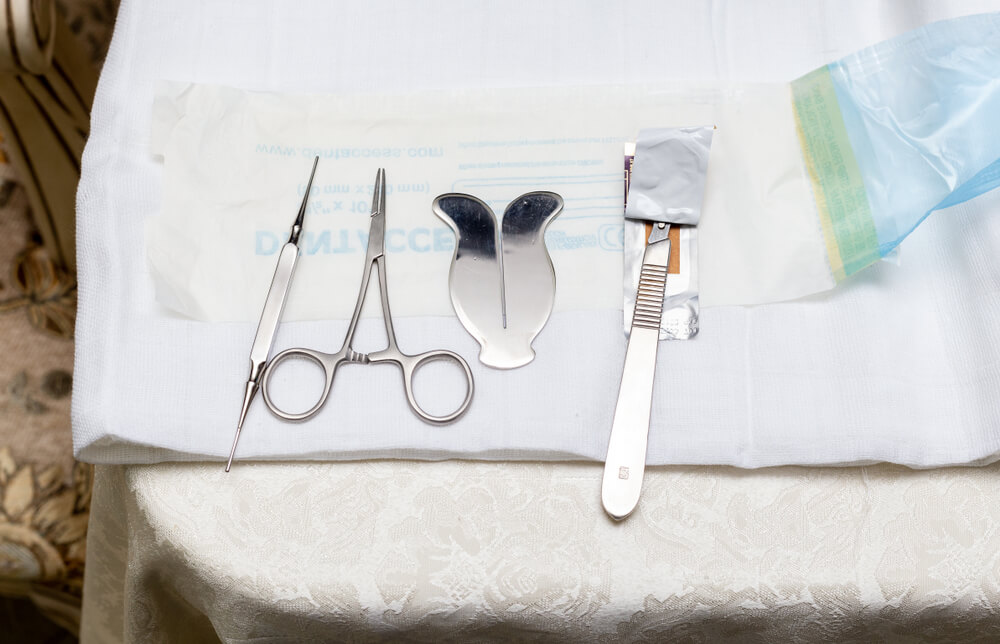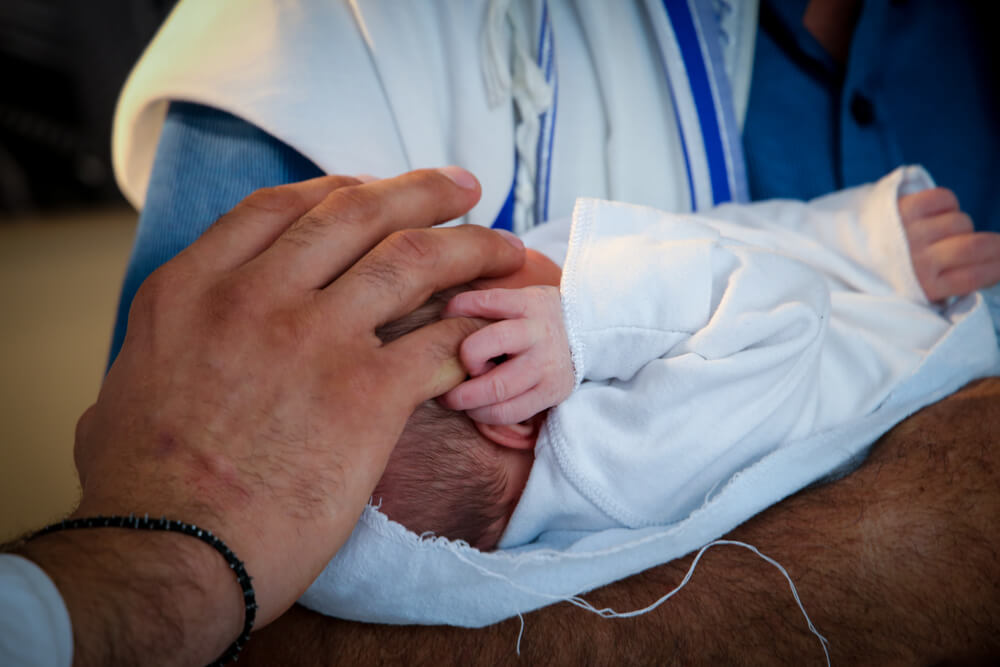More or less, all circumcision techniques can be best defined as minor surgical procedures during which the fold of the skin that covers the penis (the foreskin) gets aseptically removed. It’s a common surgical intervention around the world, especially in the US, Canada, the Middle East, Central Asia, and West Africa.
Circumcision methods are typically performed on newborn baby boys on their eighth day of existence, which is the most typical practice in the case of Jewish communities. That said, a circumcision may also be performed later in life in older children and adults. Again, in a religious setting, the different circumcision methods are performed by a trained mohel, such as Dr. Andrew Krinsky.
On the other hand, surgeons, trained pediatricians, and urologists may also perform the intervention.
There may be several reasons for parents to decide to have the surgery performed on their son. The different types of circumcision approaches can improve hygiene, reduce the risks associated with urinary tract infections, and may even decrease the risk of contracting sexually transmitted infections.
Still, it’s not a medically required intervention, and experts may perform it with the help of various techniques. As such, in this article, we’ll talk about the different approaches experts use to perform this minor intervention.
What is the Purpose of Circumcision?
Despite ongoing medical debates surrounding circumcision, many families continue to observe this practice as a significant aspect of their religious beliefs. Religion stands as the primary motivation behind the universal circumcision of boys in certain regions before they leave the birthing facility. Within Islam and Judaism, circumcision holds great religious significance and is mandated by religious laws. In Islamic culture, the procedure is commonly referred to as khitan, while in Judaism, it is known as brit or Bris Milah. The Jewish community regards circumcision as a sacred ritual marking the initiation of newborn males.
Generally, circumcision can be performed using various techniques, but the three most prevalent methods are the Gomco clamp, Plastibell device, and Mogen clamp. To learn more about these three primary circumcision methods, please continue reading below.

The Three Circumcision Methods
As mentioned above, the three main circumcision techniques are the Plastibell, Gomco, and Mogen clamp. For the most part, all three of these methods work quite similarly: they impede the blood flow to the foreskin once the expert makes the cut.
Before performing any type of circumcision cuts, the child will be laid down on a flat surface with arms on his side. Then, the expert will give them local anesthesia (typically an anesthetic cream or a sterile injection) to numb the area of the penis. The Entire procedure won’t take longer than around twenty minutes to half an hour.
Performing Circumcision with the Plastibell Device
The Plastibell device offers a simple, swift, and effective method for circumcision. It involves a small plastic ring equipped with a handle positioned between the prepuce (foreskin) and the glans penis. Here are the steps involved in conducting a Plastibell circumcision:
- Position the child on a flat surface or surgical bed, ensuring both arms and legs are appropriately restrained.
- Administer topical anesthesia or a local anesthesia injection, such as Lidocaine, to ensure the area is numbed.
- Gently separate the foreskin or prepuce from the glans penis by employing a probe or slender surgical rod.
- Insert the Plastibell or plastic ring beneath the baby’s foreskin.
- Carefully stretch the foreskin over the Plastibell, securing a suture or sterile string to promote clotting or coagulation.
Performing Circumcision with the Gomco Clamp
The Gomco clamp is a sterile surgical device specifically designed for precise and controlled removal of the foreskin during circumcision. It has a round metal cap, plate, and screw mechanism.
The Gomco circumcision method is a straightforward, efficient, and effective procedure. It typically results in minimal to moderate bleeding, which can be managed using pain medication. However, some medical professionals have expressed concerns about aspects of the procedure, such as inadequate adherence to aseptic techniques and potential cosmetic issues. Despite these concerns, Gomco circumcision continues to be widely practiced worldwide.
Before the procedure, informed consent is obtained, and the patient is administered local anesthesia. The penis is exposed and aseptically cleaned. The doctor or circumciser then stretches the preputial opening and retracts the foreskin to reveal the glans penis. A lubricant is applied to the glans penis to prevent it from adhering to the bell-shaped device. Care is taken to ensure the skin fold is not excessively stretched or pulled, as this could lead to urethral trauma.
Once the dimensions are confirmed, the clamp plate is positioned over the foreskin. The flange on the clamp’s handle is then fitted and tightened, effectively compressing the prepuce between the clamp and the bell. This compression ensures a painless and bloodless procedure. The foreskin is subsequently removed using a scalpel or surgical scissors.
The clamp is gently removed using an antiseptic solution, and a clean dressing is applied. Early removal of the clamp may result in excessive bleeding, which would necessitate suturing by the circumciser. After the procedure, parents should be vigilant for any signs of bleeding at home.
Types of Circumcision Cuts: Using the Mogen Clamp
When addressing the topic of the most widespread types of circumcision cuts, we also have to talk about the Mogen clamp, the most popular method used during bris milah ceremonies.
As a matter of fact, even now, In modern times, many doctors in the United States prefer utilizing this method for its simplicity and effectiveness. The entire procedure is conducted without causing any bleeding and is straightforward to perform. Additionally, the risk of postoperative infection is reduced since the instrument is not left on the baby’s penis.
The Mogen clamp is a specialized surgical instrument designed for circumcision, suitable for both neonatal boys and older children. It consists of two sharp, flat blades measuring approximately 2.5-3.0 mm in size.
The initial step in the Mogen clamp technique involves obtaining consent. Following that, the circumciser will position the baby on a flat surface. Local anesthesia is then administered via injection or cream. Finally, the circumciser will gently extend the foreskin using straight hemostats to expose the glans penis and securely place the Mogen clamp.
The circumciser will carefully slide the clamp across the prepuce from the back to the front, ensuring precision and caution. Once the tip of the glans penis is appropriately exposed, the Mogen clamp is locked in place. Subsequently, a surgical scalpel is used to remove the fold of skin from the upper part of the clamp. For newborns, sutures are typically unnecessary. However, in older individuals, suturing or the application of a cyanoacrylate tissue adhesive may be required.

Learn More
While these are the most prevalent surgical aspects of the different types of circumcision, in the Jewish community, the procedure points to a lot more than just a mere surgical intervention. If you wish to learn more about those aspects, feel free to reach out to Dr. Krinsky today.







